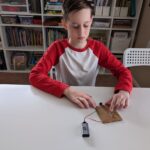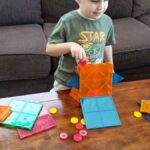I’ve noticed a great deal of recent buzz about water bottle rockets! What’s the science behind these rockets? And what are 3 rocket projects you can do with your kids this summer in your backyard?
Table of Contents
The Science Behind Water Bottle Rockets
These model rockets use 2-liter plastic bottles as the vessels and water as the reaction mass.
The water is forced out by the compressed air.
These projects are great lessons in physics. But first, let’s do a quick review of Newton’s Laws of Motion.
Newton’s First Law of Motion: Objects at rest stay at rest, or objects in motion stay in motion, unless acted on by a force.
Newton’s Second Law of Motion: Acceleration of an object is directly related to the force exerted on the object and oppositely related to the mass.
Newton’s Third Law of Motion: For every action, there’s an opposite reaction. These always come in pairs, and if one force is stronger than the other one, that object will move.
How do Newton’s Laws relate to a water bottle rocket?
For a rocket to lift off, force must be exerted. (That’s the First law.)
The rate (speed) will be determined by two things: The mass (weight) of the rocket and by the force produced. (Second law.)
The reaction, or motion, of the rocket away from the launch pad is equal to and opposite from the thrust of the engine or nozzle. (Third law.)
So, with that brief review of physics lessons in mind – let’s get started on our water bottle rocket projects!
What You Need to Create Your Own Plastic Bottle Rockets
Each of these experiments are a bit different! They will create pressure in different ways so that your rockets can fly. But, in general, you’ll need the following to create your high-flying water bottle rockets!
- Rocket – one or more empty plastic bottles, typically a 2-liter soda bottle
- Water – sometimes additives, such as soap or salt are also used
- Gas – bicycle pump, air compressor, compressed gas in bottles, or create a chemical reaction that will generate pressurized gas
- Nozzle – bottle neck opening, cork, garden hose connector (Gardena quick connector)
- Fins – cardboard
- Launch pad – cardboard box, bricks, stones
- Landing system – parachute
WARNING!
Always use water bottle rockets outdoors. Your children should not try these projects alone because of the extreme force involved. Once air starts pumping into the bottle, stand back, even if nothing happens right away! Everyone should wear safety glasses.
3 Ways to Create Your Own Water Bottle Rocket
Let’s jump into three variations on how you can create your own rocket out of a water bottle or other plastic bottles.
1. Classic Water Bottle Rocket
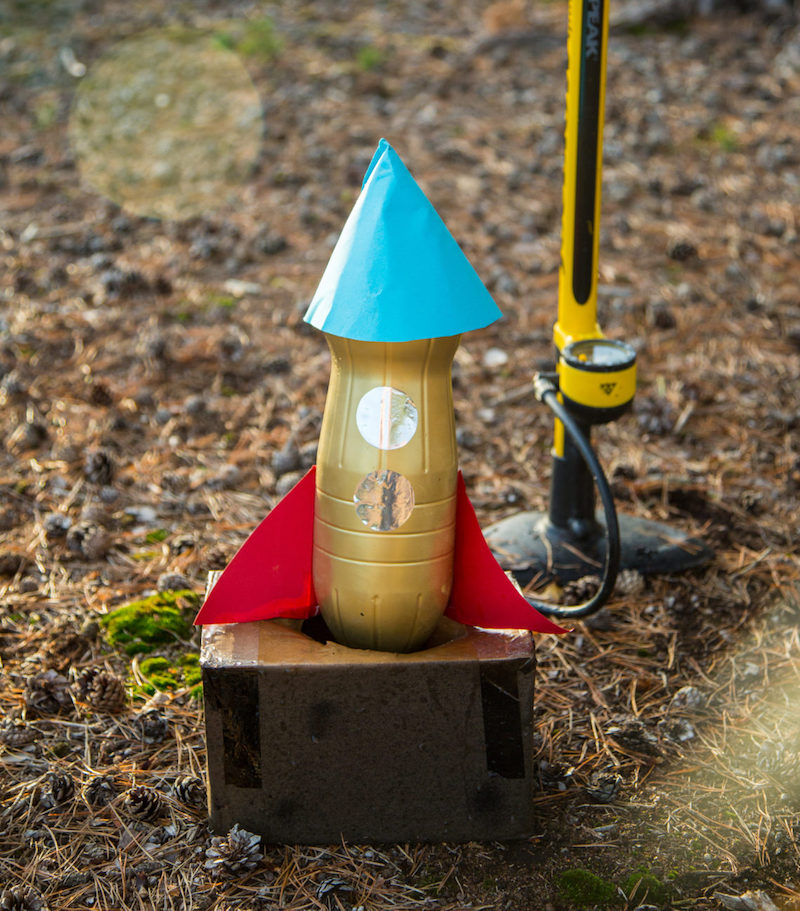
This is the classic water bottle rocket experiment! You can find the full instructions here from Science Sparks.
For this project, you’ll need a plastic water or soda bottle, bike pump, construction paper or cardboard, a cork, and duct tape.
In this experiment, you’ll fill your rocket slightly with water. Use a cork and duct tape to create a tight seal for your nozzle. You’ll also need a needle adapter for your bike pump. Begin filling the rocket with air and once the pressure builds up, the rocket will blast off!
2. Baking Soda Rocket
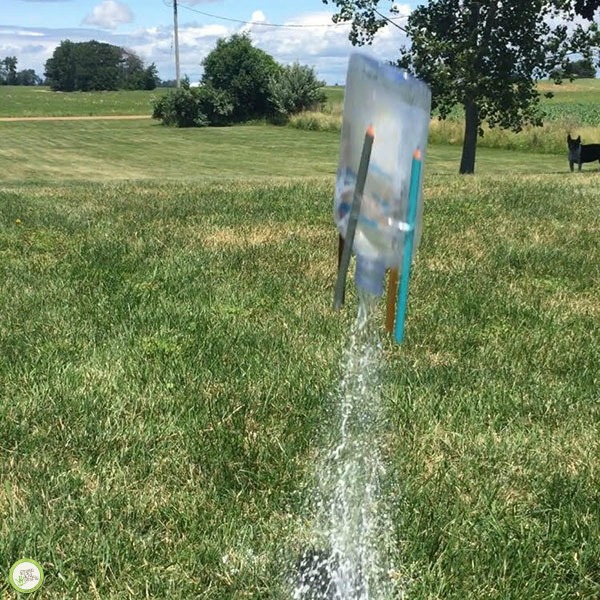
Instead of using air pressure from a pump, this rocket builds up pressure from a chemical reaction.
You can find full instructions on how to create a bottle rocket with baking soda and vinegar from Green Kid Crafts here.
This is a slightly easier rocket design since you don’t need to create a nozzle for this rocket.
3. Diet Coke & Mentos Rocket Cars
Have you done the diet coke and mentos experiment yet? Take it a step further by creating your own rocket cars propelled by the coke & mentos reaction.
You can also attempt to create a rocket and follow a similar process as the baking soda and vinegar bottle rocket above. However, I’ve found that the rocket cars are also very cool and fun to race!
Get the full instructions for this plastic bottle rocket experiment from Science World here.
Bonus: The Coke and Butane Rocket
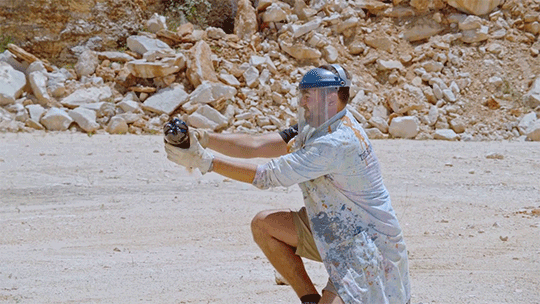
Alright, while this rocket is really cool to watch, it’s not the safest one to try at home. I don’t recommend this one, but it is really cool science! (And it’s really simple.)
You drink or pour out a little bit of coke from your bottle. You then fill the top of the bottle with butane.
Butane has a very low boiling point. When you flip the bottle over the butane mixes with the warmer coke and becomes gaseous. The extra volume forces the butane and coke mixture out of the bottle, propelling it upward.
Discussion Questions for Plastic Bottle Rocket Experiments
While you can just have fun blasting rockets in the backyard, also consider these discussion questions while building, launching, and watching your water bottle rockets fly!
- Why did the rocket launch?
- What worked? What still needs improvement?
- What design improvements could I do?
- How can I test these improvements?
These are great projects to do alongside a lesson about the engineering design process. You can grab our free engineering design process worksheet here.
What was your favorite water bottle rocket? Let us know in the comments!





